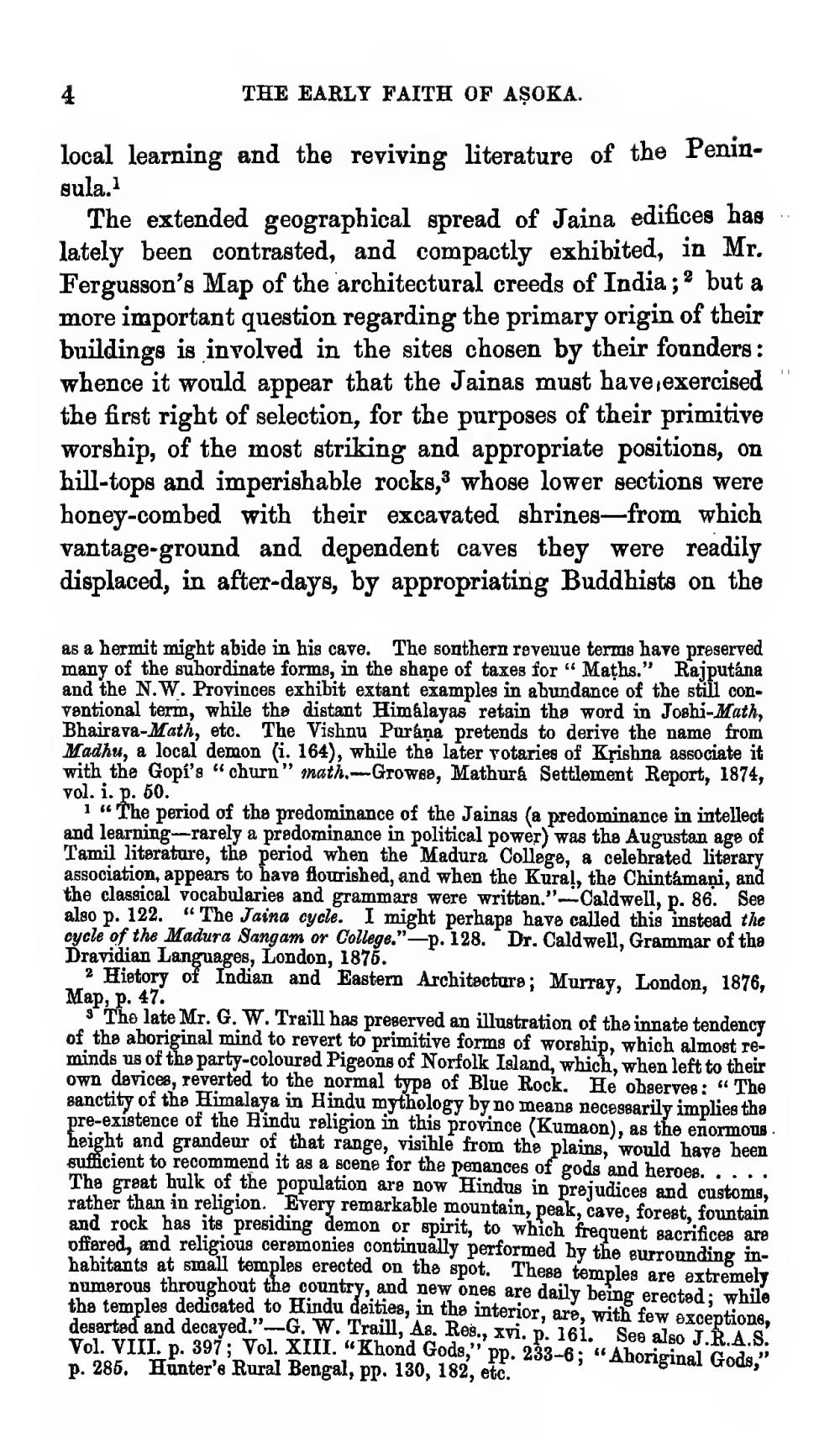________________
THE EARLY FAITH OF AŞOKA.
local learning and the reviving literature of the Peninsula.
The extended geographical spread of Jaina edifices has . lately been contrasted, and compactly exhibited, in Mr. Fergusson's Map of the architectural creeds of India ;? but a more important question regarding the primary origin of their buildings is involved in the sites chosen by their founders : whence it would appear that the Jainas must have exercised the first right of selection, for the purposes of their primitive worship, of the most striking and appropriate positions, on hill-tops and imperishable rocks, whose lower sections were honey-combed with their excavated shrines—from which vantage-ground and dependent caves they were readily displaced, in after-days, by appropriating Buddhists on the
as a hermit might abide in his cave. The sonthern reveuue terms have preserved many of the subordinate forms, in the shape of taxes for “Maths." Rajputána and the N.W. Provinces exhibit extant examples in abundance of the still conventional term, while the distant Himalayas retain the word in Joshi-Math, Bhairava-Math, etc. The Vishnu Purana pretends to derive the name from Madhu, a local demon (i. 164), while the later votaries of Krishna associate it with the Gopi's churn" math...Grow69, Mathura Settlement Report, 1874, vol. i. p. 50.
1 «The period of the predominance of the Jainas (a predominance in intellect and learning-rarely a predominance in political power) was the Augustan age of Tamil literature, the period when the Madura College, a celebrated literary association, appears to have flourished, and when the Kural, the Chintamani, and the classical vocabularies and grammars were written."-Caldwell, p. 86. See also p. 122. "The Jaina cycle. I might perhaps have called this instead the cycle of the Madura Sangam or College."-p. 128. "Dr. Caldwell, Grammar of the Dravidian Languages, London, 1875.
2 History of Indian and Eastern Architectura; Murray, London, 1876, Map, p. 47.
s The late Mr. G. W. Traill has preserved an illustration of the innate tendency of the aboriginal mind to revert to primitive forms of worship, which almost reminds us of the party-coloured Pigeons of Norfolk Island, which, when left to their own devices, reverted to the normal type of Blue Rock. He observes: “The sanctity of the Himalaya in Hindu mythology by no means necessarily implies tha pre-existence of the Hindu religion in this province (Kumaon), as the enormous height and grandeur of that range, visible from the plains, would have been sufficient to recommend it as a scene for the penances of gods and heroes..... The great bulk of the population are now Hindus in prejudices and customs, rather than in religion. Every remarkable mountain, peak, cave, forest, fountain and rock has its presiding demon or spirit, to which frequent sacrifices are offered and religious ceremonies continually performed by the surrounding inhabitants at small temples erected on the spot. These temples are extremely numerous throughout the country, and new ones are daily being erected; while the temples dedicated to Hindu deities, in the interior, are, with few exceptione, deserted and decayed." G. W. Traill, As. Reg., xvi. p. 161. See also IRAS VOL VUI. p. 397: Vol. XIII. “Khond Gods," pp. 233-6; “Aboriginal Gods." p. 285. Hunter'e Rural Bengal, pp. 130, 182, etc.




